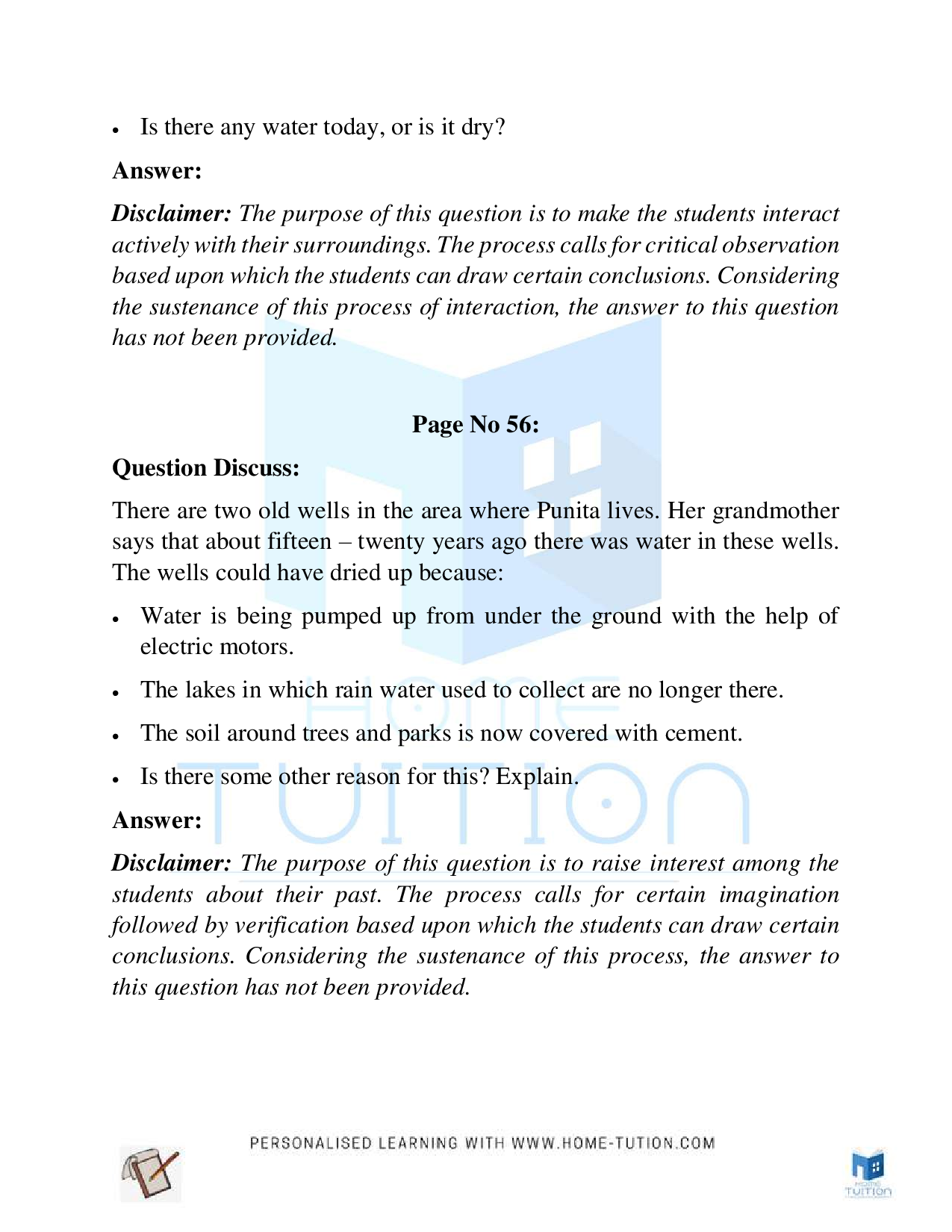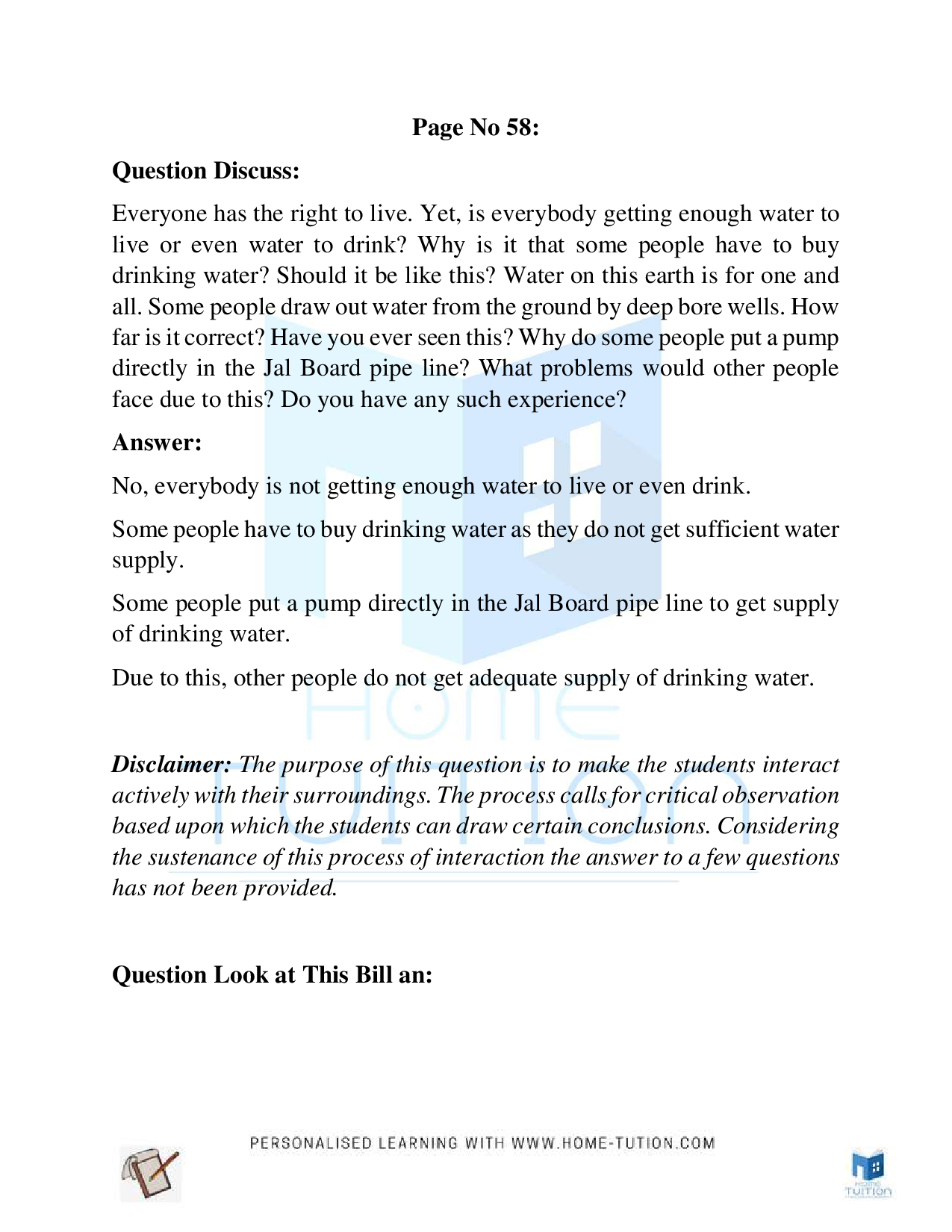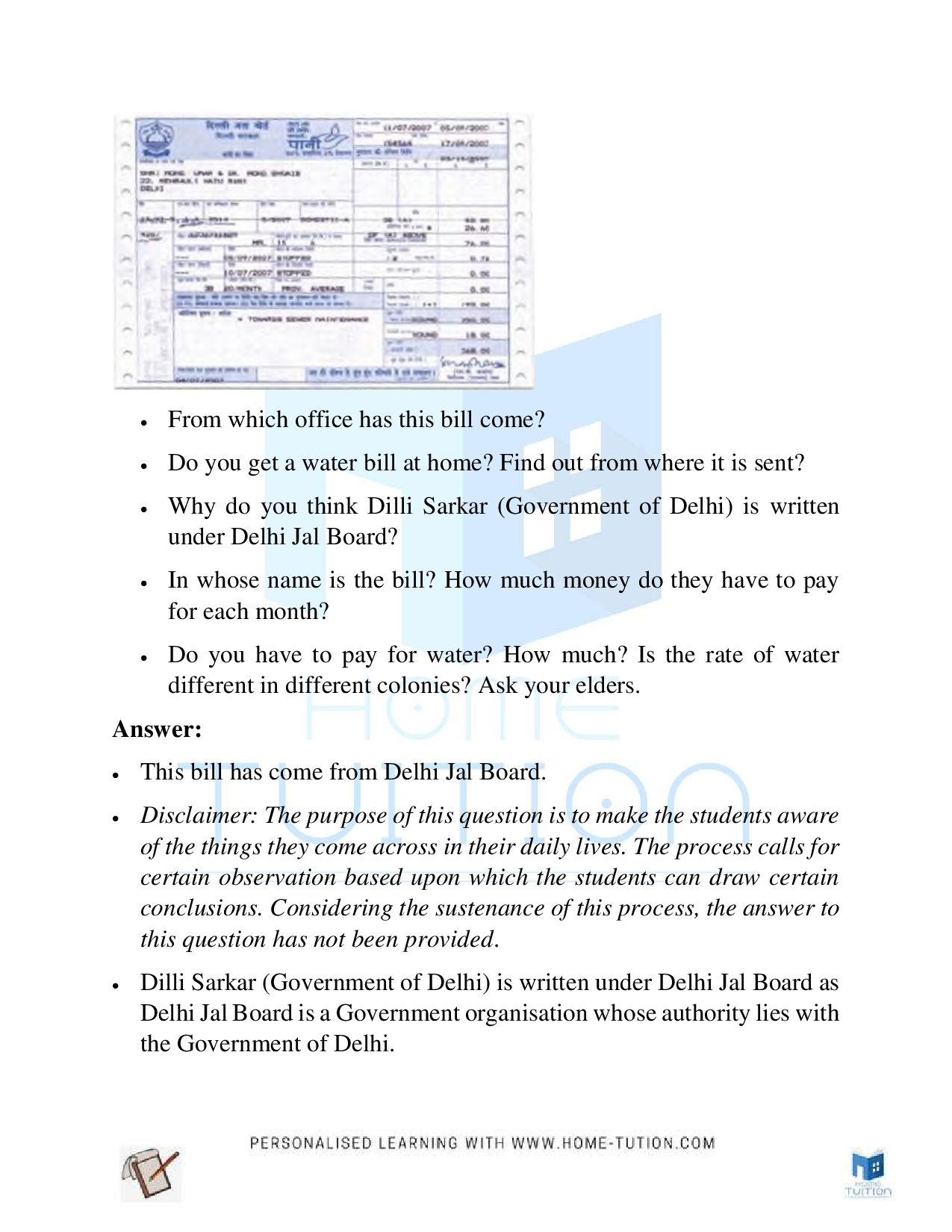NCERT Class 5 EVS Chapter 6 Every Drop Counts
- BoardCBSE
- TextbookNCERT
- ClassClass 5
- SubjectEVS
- ChapterNCERT Class 5 EVS Chapter 6 Every Drop Counts
- Chapter NameChapter 6 Every Drop Counts
- CategoryNCERT Solutions
NCERT Solutions for Class 5 EVS Chapter 6 Every Drop Counts
Find pdf of NCERT Solutions for Class 5 EVS Chapter 6 Every Drop Counts prepared by expert teachers. All the questions asked in the exercise of Every Drop Counts are solved with the required details.
A Brief Introduction to Chapter 6 Every Drop Counts
Chapter 6 Every Drop Counts- In this chapter, we will first introduce the Importance of rainwater and how can we collect it. Every drop of water is precious for all of us. Even in many parts of India, we have customs related to the water, which we will cover in this chapter. It is a basic need that should be provided to all the people, especially in rural areas. At last, we will discuss it also.
Find pdf of NCERT Solutions for Class 5 EVS Chapter 6 Every Drop Counts
Page No 52: Question Think and Find Out:
Look at the area around your school. Are there any fields, farms, pucca roads, drains, etc.? Is the area sloping, rocky or flat? Think, what will happen here when it rains? Where will the rain water go – into the drains, pipes or pits? Is some water also getting soaked into the soil?
Answer:
The area around my school has pucca roads and drains. The area is little sloping. When it rains, water flows into the drains. Also, on the sides of the roads there are small pits where water accumulates sometimes. Some water also gets soaked into the soil.
Disclaimer: This question is situation specific. Hence, the answer for the same can vary from one student to another.
Page No 55: Question Find Out:
Is there a lake, well or stepwell near your house or school? Visit it and find out more about it.
· How old is it? Who got it built?
· What kinds of buildings are around it?
· Is the water clean? Is it cleaned regularly?
· Who all use the water?
· Is there any festival celebrated at this place?
· Is there any water today, or is it dry?
Answer:
Disclaimer: The purpose of this question is to make the students interact actively with their surroundings. The process calls for critical observation based upon which the students can draw certain conclusions. Considering the sustenance of this process of interaction, the answer to this question has not been provided.
Page No 56:
Question Discuss:
There are two old wells in the area where Punita lives. Her grandmother says that about fifteen – twenty years ago there was water in these wells. The wells could have dried up because:
· Water is being pumped up from under the ground with the help of electric motors.
· The lakes in which rain water used to collect are no longer there.
· The soil around trees and parks is now covered with cement.
· Is there some other reason for this? Explain.
Answer:
Disclaimer: The purpose of this question is to raise interest among the students about their past. The process calls for certain imagination followed by verification based upon which the students can draw certain conclusions. Considering the sustenance of this process, the answer to this question has not been provided.
Page No 58:
Question Discuss:
Everyone has the right to live. Yet, is everybody getting enough water to live or even water to drink? Why is it that some people have to buy drinking water? Should it be like this? Water on this earth is for one and all. Some people draw out water from the ground by deep bore wells. How far is it correct? Have you ever seen this? Why do some people put a pump directly in the Jal Board pipe line? What problems would other people face due to this? Do you have any such experience?
Answer:
No, everybody is not getting enough water to live or even drink.
Some people have to buy drinking water as they do not get sufficient water supply.
Some people put a pump directly in the Jal Board pipe line to get supply of drinking water.
Due to this, other people do not get adequate supply of drinking water.
Disclaimer: The purpose of this question is to make the students interact actively with their surroundings. The process calls for critical observation based upon which the students can draw certain conclusions. Considering the sustenance of this process of interaction the answer to a few questions has not been provided.
Question Look at This Bill an:
· From which office has this bill come?
· Do you get a water bill at home? Find out from where it is sent?
· Why do you think Dilli Sarkar (Government of Delhi) is written under Delhi Jal Board?
· In whose name is the bill? How much money do they have to pay for each month?
· Do you have to pay for water? How much? Is the rate of water different in different colonies? Ask your elders.
Answer:
· This bill has come from Delhi Jal Board.
· Disclaimer: The purpose of this question is to make the students aware of the things they come across in their daily lives. The process calls for certain observation based upon which the students can draw certain conclusions. Considering the sustenance of this process, the answer to this question has not been provided.
· Dilli Sarkar (Government of Delhi) is written under Delhi Jal Board as Delhi Jal Board is a Government organisation whose authority lies with the Government of Delhi.
· The bill is in the name of Mohd. Umar and Dr. Mohd. Shoaib. They have to pay a total amount of three hundred sixty-eight rupees.
· Disclaimer: The purpose of this question is to make the students aware of the things they come across in their daily lives. The process calls for certain observance based upon which the students can draw certain conclusions. Considering the sustenance of this process the answer to this question has not been provided.
Page No 59: Question What we have learnt:
· Make a poster: Do you remember the slogan – “Water on earth is for one and all.” Think of some other such slogans. Draw pictures and make a nice poster.
· Bring a water bill, look at it and tell –
· This bill is from _ date to date.
· How much money is to be paid for this bill?
· What else can you see in the bill, like money spent on repair, maintenance etc.?
Answer:
· Disclaimer: This section aims at increasing the creativity of the students. Hence, the students are advised to do this section themselves.
· Disclaimer: The purpose of this question is to make the students aware of the things they come across in their daily lives. The process calls for certain observance based upon which the students can draw certain conclusions. Considering the sustenance of this process the answer to this question has not been provided.





Related Links
- NCERT Class 5 EVS Chapter 1 Super Senses
- NCERT Class 5 EVS Chapter 2 A Snake Charmer’s Story
- NCERT Class 5 EVS Chapter 3 From Tasting to Digesting
- NCERT Class 5 EVS Chapter 4 Mangoes round the Year
- NCERT Class 5 EVS Chapter 5 Seeds and Seeds
- NCERT Class 5 EVS Chapter 6 Every Drop Counts
- NCERT Class 5 EVS Chapter 7 Experiments with Water
- NCERT Class 5 EVS Chapter 8 A Treat or Mosquitoes
- NCERT Class 5 EVS Chapter 9 Up You Go!
- NCERT Class 5 EVS Chapter 10 Walls tell stories
- NCERT Class 5 EVS Chapter 11 Sunita in space
- NCERT Class 5 EVS Chapter 12 What if it finishes?
- NCERT Class 5 EVS Chapter 13 A shelter so high!
- NCERT Class 5 EVS Chapter 14 When the earth shook!
- NCERT Class 5 EVS Chapter 15 Blow hot, blow cold
- NCERT Class 5 EVS Chapter 16 Who will do this work?
- NCERT Class 5 EVS Chapter 17 Across the wall
- NCERT Class 5 EVS Chapter 18 No place for ls?
- NCERT Class 5 EVS Chapter 19 A seed tells a farmer’s story
- NCERT Class 5 EVS Chapter 20 Whose forests?
- NCERT Class 5 EVS Chapter 21 Like father, like daughter
- NCERT Class 5 EVS Chapter 22 On The move again